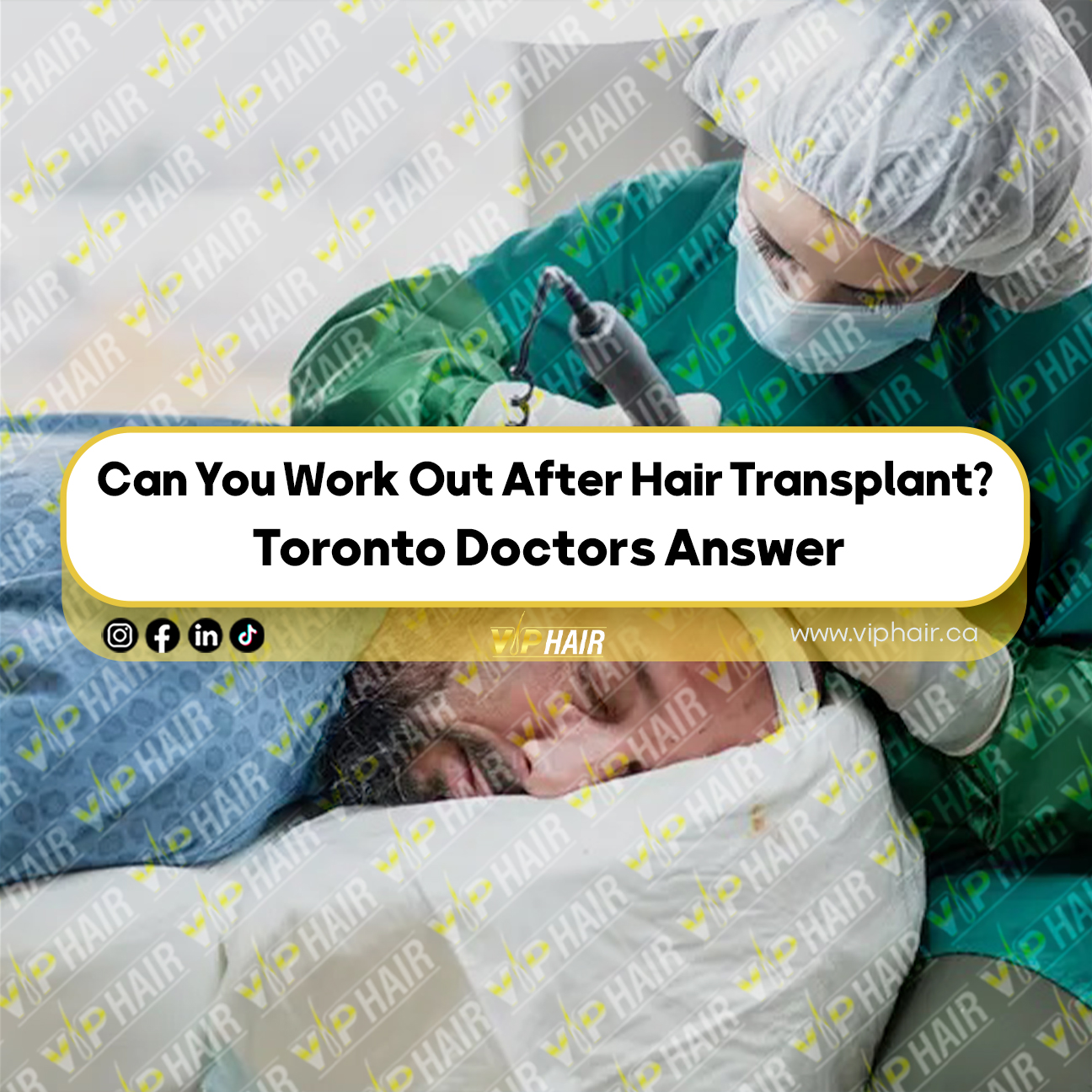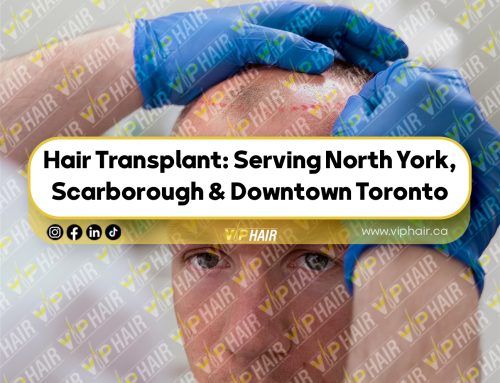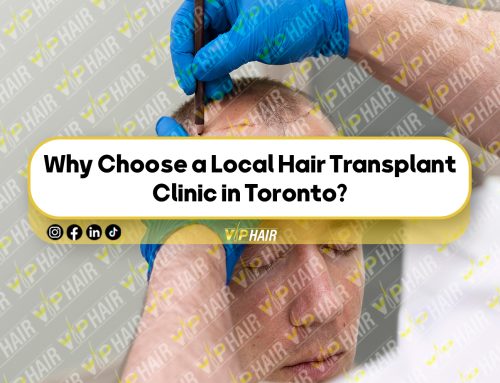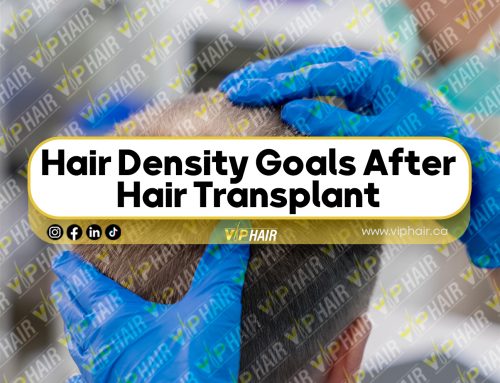Hair transplants have become one of the most sought-after cosmetic procedures in Toronto, especially among men and women looking for a permanent solution to thinning or receding hairlines. But for fitness lovers, one major question often arises post-surgery:
“Can I work out after a hair transplant?”
Whether you’re an avid gym-goer in downtown Toronto, a weekend cyclist on the Don Valley trails, or just someone who enjoys staying active, understanding how exercise affects your recovery is crucial.
In this comprehensive guide, Toronto hair transplant specialists share their expert insights on when and how you can safely return to your fitness routine without compromising your results.
Why Exercise Timing Matters After a Hair Transplant
After undergoing a hair transplant in Toronto, your scalp is healing from a surgical procedure. This healing process is delicate—especially during the first few days and weeks. Exercising too soon can put stress on the newly transplanted follicles and lead to complications such as:
-
Increased swelling
-
Excessive sweating and irritation
-
Risk of dislodging grafts
-
Delayed healing
-
Infection risk
That’s why timing is everything. Listening to your doctor’s post-op instructions is essential, especially when it comes to resuming physical activity.
The First 7 Days: Strict Rest & No Sweating
According to top Toronto surgeons, the first week post-transplant is the most critical. During this time, the grafts are still very fragile, and even mild activities can disrupt them.
What You Should Avoid:
-
No gym workouts
-
No jogging or running
-
No yoga or stretching
-
No bending over or head-down positions
-
Absolutely no sweating
Even something as simple as a brisk walk or climbing stairs can raise your blood pressure and potentially cause grafts to dislodge.
Toronto Tip: Most clinics recommend staying indoors and avoiding heat or humidity during this initial phase.
Days 8–14: Light Activity May Resume
After the first week, many Toronto doctors permit light activities as long as you avoid intense exertion or anything that causes excessive sweating.
What You Can Do:
-
Gentle walking
-
Light household chores
-
Short walks outside in cool weather
However, you should still avoid:
-
Cardio workouts
-
Weightlifting
-
Sauna or steam rooms
-
Any headwear (e.g., helmets or caps while cycling)
This period is more about easing your body back into movement without compromising the healing process.
Week 3 Onward: Gradual Return to Fitness
By the third week, most of the scabs are gone, and the transplanted follicles have begun to settle. At this stage, patients who underwent hair transplant procedures in Toronto can usually return to moderate exercise—with caution.
Safe to Resume:
-
Stationary cycling
-
Elliptical workouts
-
Light strength training (avoiding straining or compound lifts)
-
Stretching and low-impact yoga
Still Avoid:
-
Heavy lifting
-
Intense cardio (e.g., HIIT or sprinting)
-
Hot yoga or anything that induces profuse sweating
Week 4 and Beyond: Back to Your Regular Routine (Almost)
By the fourth to sixth week, most patients can return to their full workout routine—provided there are no signs of irritation, redness, or unusual scalp sensitivity.
Top Toronto surgeons recommend:
-
Starting with 70–80% of your usual intensity
-
Avoiding exercises that involve frequent head contact (e.g., wrestling, jiu-jitsu)
-
Wearing moisture-wicking headbands if needed—but gently
Important: Always check in with your hair transplant clinic before returning to full training. Personalized advice based on your healing progress is best.
How Sweating Affects Transplanted Hair
Sweat itself isn’t harmful, but it can carry bacteria and salt, which may irritate healing skin. In the early stages, sweat buildup on the scalp can:
-
Cause itching
-
Attract bacteria and increase infection risk
-
Loosen scabs prematurely
-
Lead to folliculitis (infection of hair follicles)
If you start sweating during exercise in the later phases of healing, make sure to gently clean your scalp afterward using only products recommended by your Toronto hair transplant surgeon.
Gym Hygiene After a Hair Transplant
If you’re planning to return to the gym a few weeks after your hair transplant in Toronto, make sure you’re taking proper hygiene precautions:
-
Disinfect gym equipment before and after use
-
Avoid shared towels
-
Don’t touch your scalp with sweaty hands
-
Avoid wearing hats or helmets unless absolutely necessary
-
Shower immediately after workouts
A clean environment reduces the risk of infection and ensures a smoother healing process.
Outdoor Exercise in Toronto: What to Watch Out For
Toronto’s climate can be unpredictable—hot and humid summers, cold winters, and lots of wind. When exercising outdoors after a hair transplant, be mindful of:
-
Sun exposure: Avoid direct sunlight on the scalp for at least 3–4 weeks
-
Humidity: Toronto summers can trigger extra sweating—choose early mornings or indoor options
-
Cold wind: In winter, protect your scalp with a loose-fitting beanie, if advised by your doctor
Signs You’re Exercising Too Soon
Even with the best intentions, some patients rush back into fitness too fast. Here are red flags that you may need to dial it back:
-
Increased redness or swelling in the recipient area
-
Scabs reappearing or falling off too early
-
Persistent itching or irritation
-
Burning sensation in the donor or recipient site
-
Hair shedding that feels aggressive or patchy
If you notice any of these, pause your workouts immediately and contact your Toronto hair transplant provider.
Bonus Tips from Toronto Surgeons for Fitness Lovers
-
Plan your transplant during off-season if you’re a competitive athlete
-
Ask your clinic about PRP therapy to enhance healing and minimize downtime
-
Keep your head elevated while sleeping in the first 7–10 days
-
Avoid energy drinks or supplements that raise blood pressure during recovery
-
Hydrate well to support healing, especially if you sweat often
Long-Term Benefits: Fitness Helps Hair Growth!
Once you’ve passed the critical healing stage, regular exercise can actually promote long-term hair growth. How?
-
Improved blood circulation nourishes hair follicles
-
Reduced stress levels decrease cortisol and prevent hair loss
-
Better sleep and mood improve your body’s healing and growth processes
Just remember: In the first month, less is more. Once you’ve fully healed, exercise can become a key part of your post-transplant wellness plan.
Final Thoughts: Patience Leads to Better Results
If you’re a fitness lover in Toronto who’s just had a hair transplant, it’s completely understandable to want to jump back into your workout routine. But giving your body time to heal is not a step backward—it’s a smart investment in your results.
By following your surgeon’s timeline, respecting your body’s healing process, and slowly returning to activity, you can protect your grafts and enjoy a successful outcome.
Considering a Hair Transplant in Toronto?
Our clinic specializes in advanced, minimally invasive hair transplant procedures in Toronto—designed for professionals, athletes, and anyone seeking natural, long-lasting results.
Need personalized advice on post-op care, recovery timelines, or fitness restrictions? We’re here to help. Book your free consultation today.






Leave A Comment